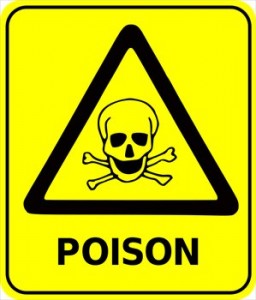Do you use commercial shampoos, conditioners, moisturizers and other personal cosmetic and hygiene products daily or regularly? Do you know what’s in them or ever wonder if they are harmful for you and your family, especially children? Do you trust companies completely that make our cosmetic and hygiene products?
 Here’s a list of some of the most common ingredients found in shampoos, conditioners, toothpastes, body and face lotions, cleansers, moisturizers and many other daily products we put on and in our bodies and the bodies of our children. These should be totally avoided, by the way.
Here’s a list of some of the most common ingredients found in shampoos, conditioners, toothpastes, body and face lotions, cleansers, moisturizers and many other daily products we put on and in our bodies and the bodies of our children. These should be totally avoided, by the way.
- SLS (Sodium Lauryl Sulfate): Can cause eye damage, irritations and skin rashes. It can penetrate children’s eyes and prevent them from developing properly. It also causes cataracts in adults.
- BHA: Is banned in the EU (European Union). Causes skin pigmentation.
- Boric Acid: Avoid using on infants and damaged skin.
- 2-Bromo-2-Nitropropane-1,3-diol (Bronopol): (even the name sounds threatening!) It is an allergen and irritant.
- Ceteareth and PEG: These are impurities that are carcinogens (cancer-causing agents).
- DMDM Hydantoin: An allergen and irritant.
- Fluoride: A known neurotoxic agent. High does stain teeth.
- Oxybenzone: An allergen in sunlight and a carcinogen.
- Sodium Borate: (not Borat!) Avoid using on infants and damaged skin.
- Triclosan: Linked to thyroid problems.
- Triethanolamine: An allergen and irritant. Damaging to liver and kidneys, and a carcinogen.
- 1,4-Dioxane: A petroleum-derived contaminant and carcinogen for humans and animals.
- It is also highly recommended to avoid all of the following ingredients in personal care and cosmetics products:
Cocamide DEA (aka Cocamide Diethanolamine)
DEA Lauryl Sulfate (aka Diethanolamine Lauryl Sulfate)
Lauramide DEA (aka Lauramide Diethanolamine)
Linoleamide DEA (aka Linoleamide Diethanolamine)
Oleamide DEA (aka Oleamide Diethanolamine)
Or any product containing TEA (Triethanolamine)
Now, go and have a look at the ingredients list on the back of all your personal care and cosmetics bottles and containers, and see what you’re really putting on and in your body.
